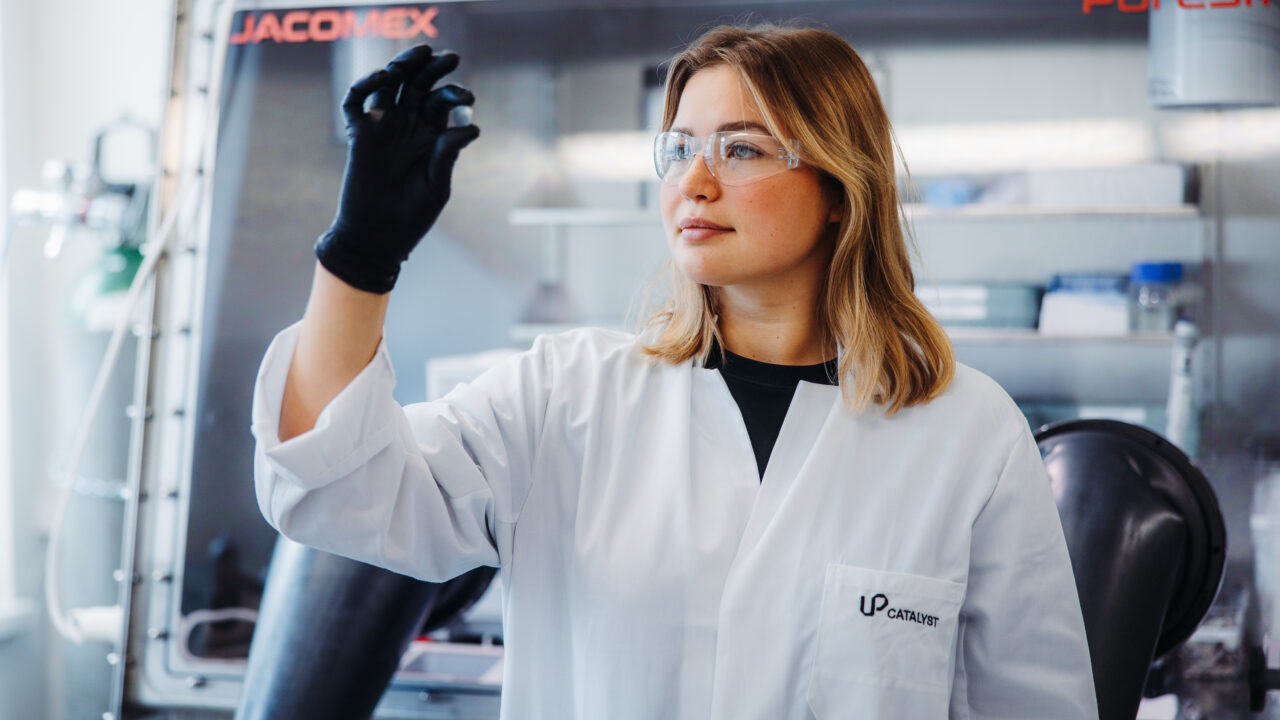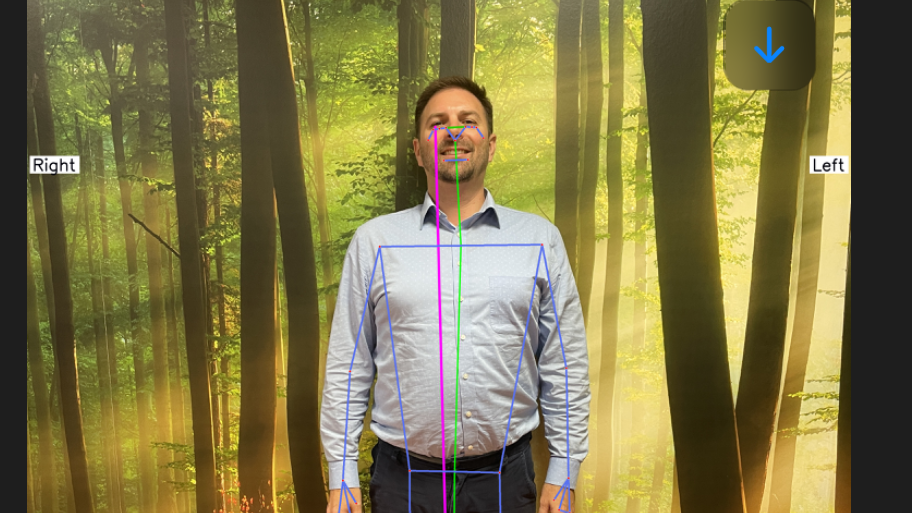Rääbis admits that she initially had no plans to pursue a doctorate: “I wanted to start working right after my master’s degree and conquer the world.”
However, UP Catalyst’s offer to combine academic research with practical applications seemed appealing, leading Rääbis to enrol at TalTech. “An industrial doctorate has many advantages – my research focuses directly on practical problems, and I can immediately apply the results in the company.” She enjoys conducting scientific work that has a real impact.
Rääbis is particularly drawn to chemistry because it allows her to find solutions to complex problems. She recalls that problem-solving had fascinated her since childhood.
In the industrial doctorate program, she successfully balances studies and work. “In my doctoral research, I investigate topics I would need to address as a researcher and developer at UP Catalyst. So, everything I do and learn during my doctorate is immediately applied in the company,” she explained.
“An industrial doctorate has many advantages – my research focuses directly on practical problems, and I can immediately apply the results in the company.”
From surfboard to laboratory
Currently, Rääbis is on an exchange program at the University of California, San Diego, working with the battery chemistry group at Griffith Lab. Her days there begin with a morning surf session, followed by intensive work in the lab. “Although the workdays here are shorter than on the East Coast, they still end around six or seven in the evening.”
Rääbis’s research focuses on carbon materials derived from CO₂, which can be used in lithium-ion and sodium-ion batteries. A practical need led her to this topic: “Our company produces carbon materials from CO₂, and batteries are their primary application.” Her work can potentially make battery production more environmentally friendly and energy-efficient.
Traditionally, batteries use graphite and carbon nanotubes produced in a highly polluting manner from fossil fuels. “Our solution utilizes CO₂ emissions as a raw material, enabling the production of battery materials in a much cleaner and more sustainable way.”
She aims to prove that Up Catalyst’s CO₂-derived materials – such as graphite and carbon nanotubes – can perform just as well, if not better, than the current market alternatives.
“Our solution utilizes CO₂ emissions as a raw material, enabling the production of battery materials in a much cleaner and more sustainable way.”

Rääbis is currently on an exchange program at the University of California, San Diego, working with the battery chemistry group at Griffith Lab. Her days there begin with a morning surf session, followed by intensive work in the lab. Photo: Private collection
A CO₂ revolution in the battery world
According to Rääbis, the thorough application of her research could bring a major shift to the battery industry. She explains the process in simple terms: “Through electrolysis, we break down CO₂ into carbon and oxygen – CO₂ → C + O₂. By adjusting the conditions, we can create different carbon structures, such as graphite, carbon nanotubes, and carbon nanospheres,” she explained.
Although the oxygen produced is currently a byproduct, Rääbis believes it could become a valuable resource in the future, especially on Mars, where the atmosphere consists mainly of CO₂.
She emphasized that this process is more efficient and environmentally friendly than traditional methods. “Using CO₂ as a raw material allows for local material production, reducing transportation costs and dependence on imported resources,” she noted.
For future industrial doctorate candidates, Rääbis advises choosing a topic that truly fascinates them. “An industrial doctorate requires great dedication and interest because it is a long and intense process.” According to her, passion for the chosen subject helps overcome challenging moments.
“An industrial doctorate requires great dedication and interest because it is a long and intense process.”
Industrial doctorate as a springboard for carbon material innovation
Sander Ratso, Mirjam-Kim Rääbis’ supervisor, co-founder of UP Catalyst, and researcher at the Institute of Biological Physics, emphasizes the clear advantages of an industrial doctorate in the rapidly evolving field of carbon materials. “Completing a doctoral thesis within a company allows for a better grasp of the fast-changing carbon materials sector. Since Mirjam-Kim was already working at UP Catalyst and was interested in pursuing a doctorate, an industrial doctorate was a logical choice.”
Ratso sees Rääbis’ research as a significant milestone in the development of battery technology. “Her study focuses on materials that can be used as electrodes and additives in lithium-ion and sodium-ion batteries. Given the rapid growth of the battery market and the high carbon footprint of currently used materials, her work has substantial potential.”
According to him, the biggest challenge is producing carbon materials from CO₂ in a way that is both high-quality and cost-competitive. “The materials currently used on the market have a large CO₂ footprint, making it critically important to replace them,” he said.
Discussing the future of the field, Ratso highlights that the rapid advancement of energy technologies makes precise predictions difficult. “In the future, we need solutions that do not increase CO₂ emissions but instead help to sequester them in the long term. Rääbis’ research serves this goal.”
Additionally, Ratso sees potential for applying Rääbis’ research findings in other areas, such as molten salt technologies.
“Her study focuses on materials that can be used as electrodes and additives in lithium-ion and sodium-ion batteries. Given the rapid growth of the battery market and the high carbon footprint of currently used materials, her work has substantial potential.”




